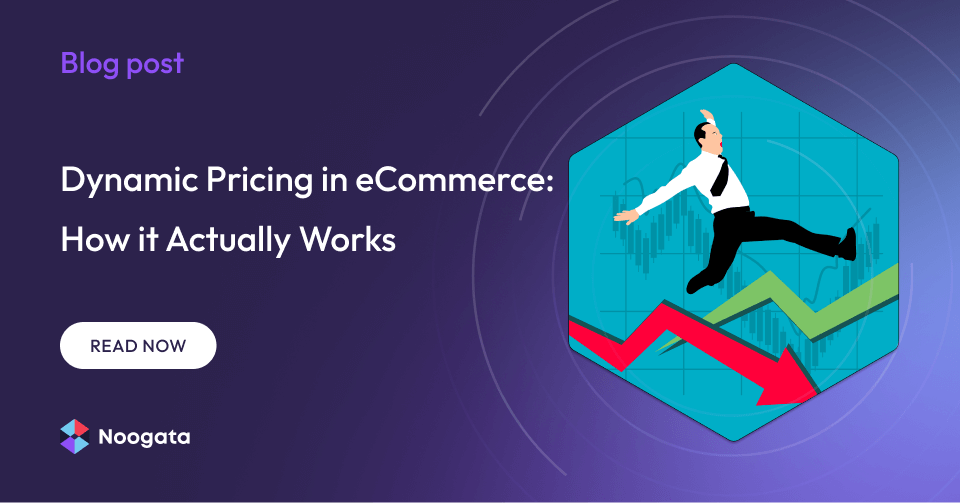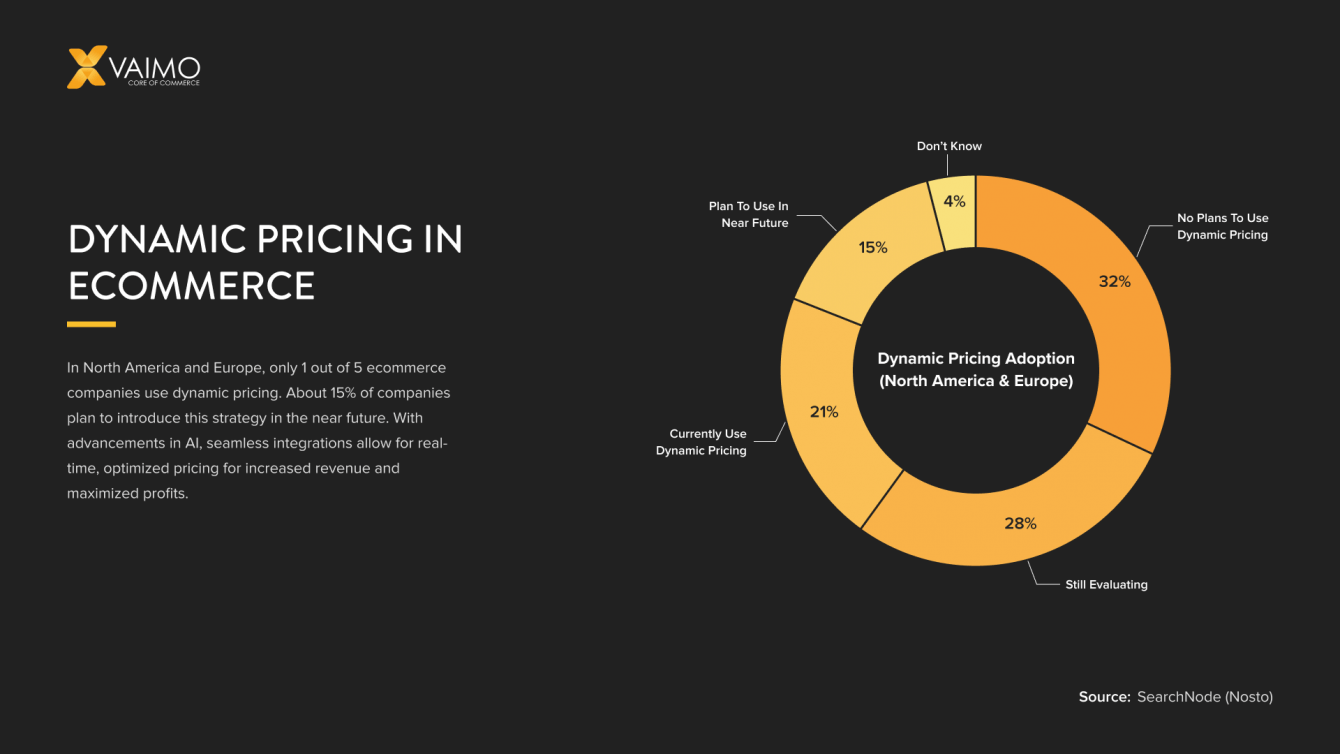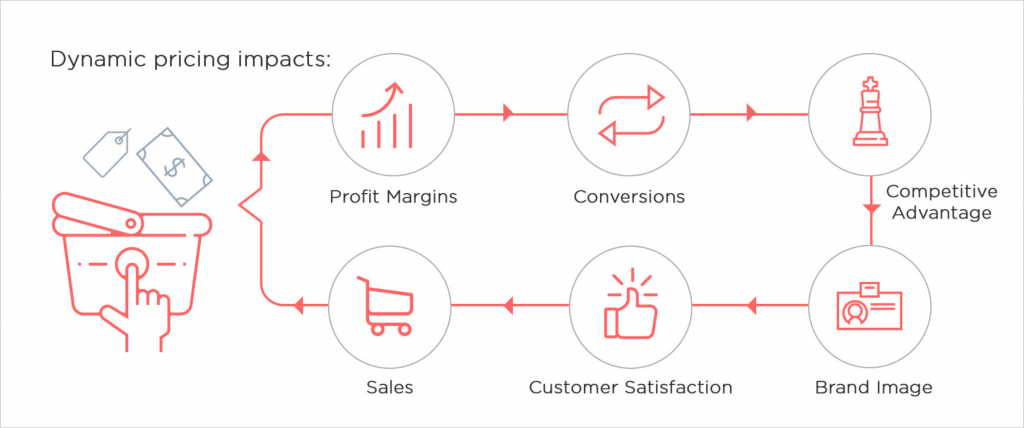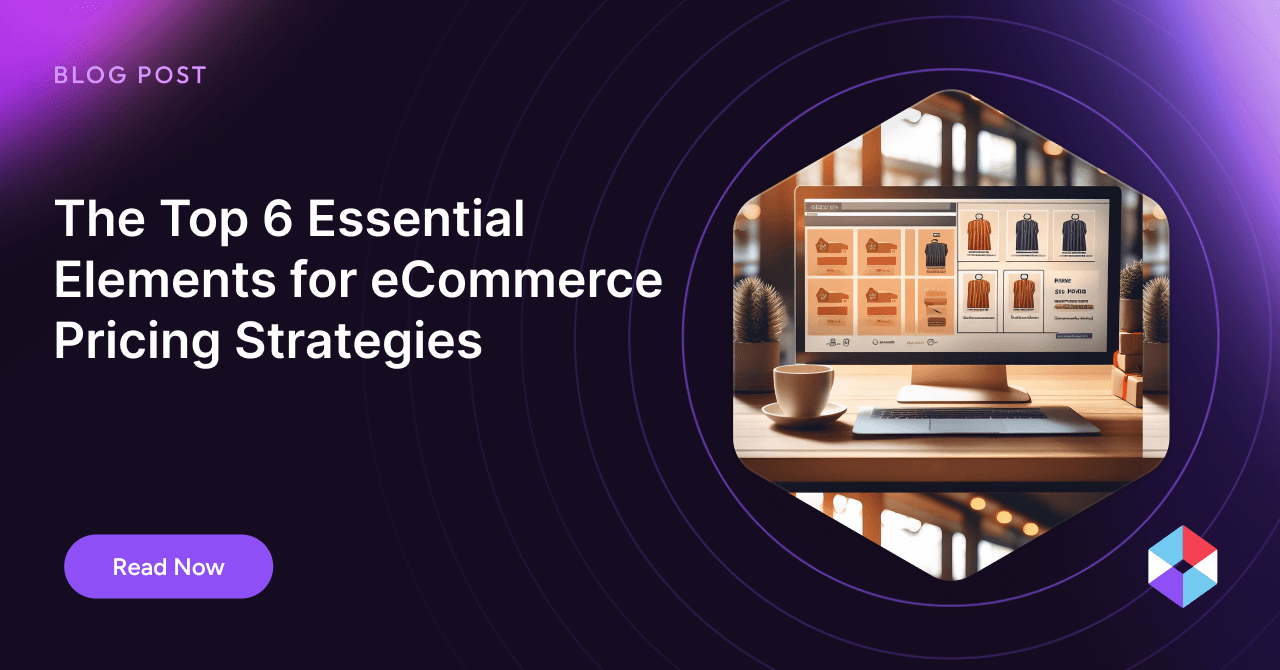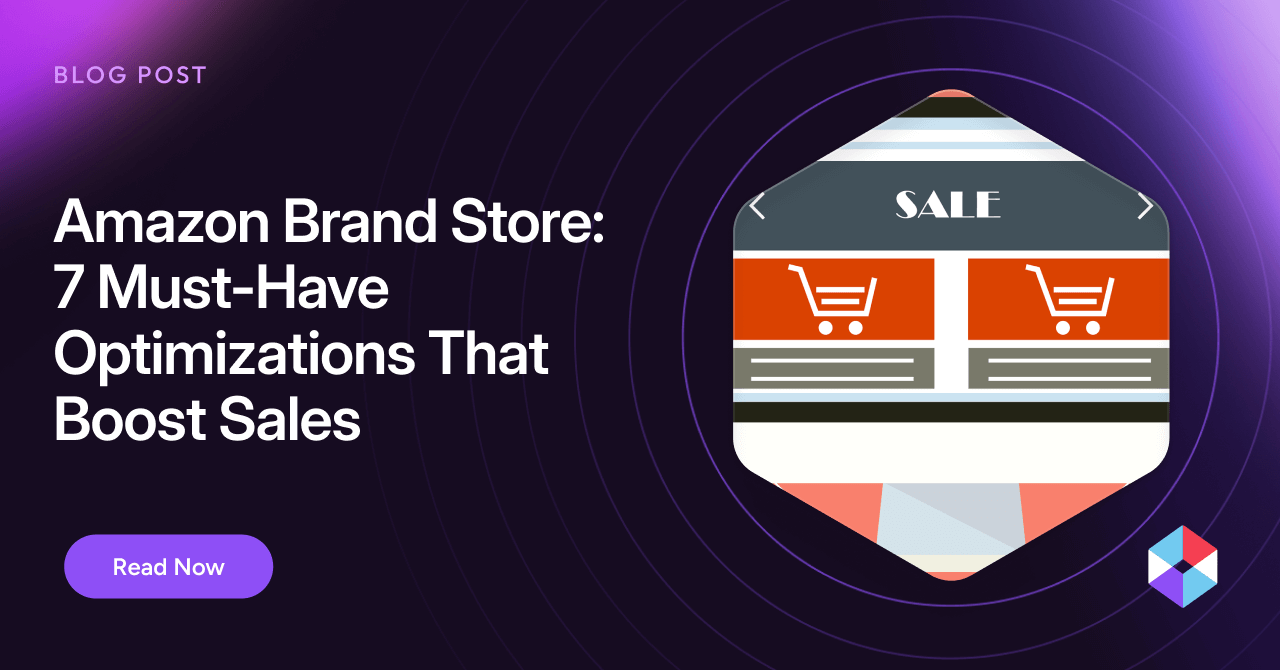On any given day in the world of eCommerce, anything can happen. Supply chain issues could drive up the cost of essential components. Competitors can inexplicably slash their prices. Viral social media trends might spark a tenfold increase in product demand. It’s a good thing merchants can respond to events like these in real-time with dynamic pricing.
Adjusting your prices in response to supply, demand, and other factors is nothing new, but the speed and frequency with which it can be done is a unique feature of eCommerce. Nearly four out of ten consumers shop online because they’re hunting for a good deal, and dynamic pricing optimizes your store’s chances of giving them what they’re looking for.
Dynamic pricing keeps you competitive, maximizes your profits, helps you meet customer expectations, and allows you to adapt quickly to constantly changing markets. Still, many merchants have questions about when, how often, and how much to adjust. We’ve got the answers about how to make dynamic pricing an effective strategy for your eCommerce business.
What is dynamic pricing in eCommerce?
Dynamic pricing is the practice of constantly adjusting product prices based on various factors: supply and demand, competitor prices, market trends, seasonality, inventory levels, digital shelf analytics, and the behavior and expectations of your customers.
You can easily see dynamic pricing in action on apps like Uber, where fare prices surge during peak demand times. Major eCommerce sites like Amazon and Walmart also dynamically price their products.
If all the various factors have been correctly accounted for, dynamic pricing will optimize your product prices for conversion while maintaining the highest possible profit margins.
What are the types of dynamic pricing in eCommerce?
There are several different strategies commonly used for implementing dynamic pricing. Here are nine important ones to familiarize yourself with:
- Peak pricing – Prices go up during times of high demand.
- Time-based pricing – Prices are adjusted on a predetermined schedule.
- Segmented pricing – Customized pricing is offered to different customer segments.
- Penetration pricing – Prices are initially set low to encourage early adoption, then raised over time.
- Volume pricing – Lower prices are offered to customers who buy larger quantities.
- Auction pricing – Prices are determined by customers stating how much they are willing to pay.
- Competitor-based pricing – Adjustments are made based on competitor price points.
- Behavior-based pricing – Customized pricing is offered to customers based on behavioral data.
- Bundle pricing – Customers are offered lower prices if they buy several different products at the same time.
When should you use dynamic pricing in eCommerce?
Some products and situations are better suited for dynamic pricing than others. Knowing where to apply a dynamic pricing strategy is critical
One of the best times for dynamic pricing is when launching a new product. By adjusting prices based on initial demand and market response, you can quickly identify the optimal price point that maximizes your profitability and ensures a competitive edge. This strategy helps gauge the market’s valuation of your product and establish a strong market presence from the outset.
Competition is always a good reason to implement dynamic pricing. When you know where your competitors’ prices stand, you can ensure you’re offering consumers a good deal without lowering your prices more than necessary.
Dynamic pricing is also a great way to manage fluctuating stock levels. If you have excess inventory of a product, lowering prices can help you clear them out. You can justify raising your prices when demand is high and inventory is low.
Dynamic Pricing in Ecommerce: What are the pros and cons?
While dynamic pricing has many benefits, there are a few potential drawbacks to consider.
Pros of Dynamic Pricing
- It gives you fine-grained control over your pricing strategy
- You can swiftly outflank your competitors who try to undercut your prices
- It leads to higher sales and profit margins
- It improves your inventory management
- You’ll gain insights into customer behavior
Cons of Dynamic Pricing
- Customers may respond negatively when you raise prices
- Inaccurate data can lead to suboptimal pricing
- Customers may try to game the system
- You can end up in race-to-the-bottom price wars that hurt profitability
It’s vital to approach dynamic pricing with consideration for its impact on your brand image and customer relationships, compliance with consumer protection regulations, and the necessity of maintaining a technology framework that provides accurate data analytics.
10 Steps to Dynamic Pricing in eCommerce That Actually Works
If you’ve decided that a dynamic pricing strategy is right for your business, here are ten steps to follow for a successful implementation:
1. Define Your Objectives
Before you do anything, make sure you can answer some critical questions about the direction and purpose of your pricing strategy:
- What are you trying to achieve through dynamic pricing?
- Do you have specific goals for sales figures or market penetration?
- How does dynamic pricing fit into your growth strategy?
- How will you measure the success of your efforts?
Nailing down your objectives from the outset will help you stay focused and make better decisions.
2. Research Your Market and Target Audience
The next step is to get the lay of the land by learning as much as possible about the market you’re entering and the consumers you’re trying to convert. You need to figure out who your competitors are, the timeframes for your busy seasons, what’s trending, and any other factors that might influence your pricing.
3. Choose the Right Strategy
With your objectives defined and your market thoroughly investigated, you can decide on a dynamic pricing strategy that fits your products, industry, and type of business well.
If you’re having trouble choosing which products to price dynamically, here’s a tip: Segment your inventory based on factors like elasticity of demand, competition, and profit margins. High-demand or highly competitive products might be more suitable for dynamic pricing adjustments
You should also consider alternative pricing models like price pack architecture (PPA), which structures various elements of product offerings—bundling, packaging, size, and pricing—to maximize their appeal to various consumer segments.
You can implement PPA more effectively with Noogata’s Amazon Sales Estimator tool and even combine it with dynamic pricing to best meet your customers’ needs and preferences.
4. Get the Right Tools
To pull off dynamic pricing effectively, you’ll need tools to gather real-time market data and automate timely price adjustments whenever needed. State-of-the-art software solutions that utilize AI and machine learning can be highly effective at generating actionable insights for this and other eCommerce tasks.
5. Ensure Compliance with Regulatory Standards
There may be restrictions on how much you can raise or lower the prices on certain products, and what demographic considerations you can consider when offering special pricing to different customer segments. Make sure you understand the relevant legal or industry regulations and follow them.
6. Set Minimum and Maximum Prices
Establishing boundaries for how high or low your prices can go is an excellent way to protect your brand value and avoid price wars that cut your profit margins. Staying within reasonable limits can also help preserve your customers’ trust and loyalty.
7. Set Your Pricing Rules
You can determine the rules that trigger price adjustments based on the dynamic pricing strategy you’ve selected. Even if you’re using an automated system, the rules should be straightforward enough that you can easily understand the reasons behind a price change.
8. Keep an Eye on Your Competitors
Competitor pricing is one of the main drivers of dynamic pricing, so make sure you can monitor their prices in real-time and add new competitors to your watchlist as they appear. Solutions like Noogata can provide detailed intelligence about your competitors’ price points and sales tactics, making it easy to react quickly and even anticipate the moves they will make.
9. Integrate with Inventory Management
Product stock levels are another significant influence on dynamic pricing. Try to integrate your pricing solutions with your inventory management system to make immediate price adjustments whenever you need to clear out overstock or raise prices when demand justifies it.
10. Monitor, Analyze, and Adapt
A strategy is only as good as the results it delivers, so you’ll need to carefully monitor your sales data, customer sentiment, and other key performance indicators related to your objectives. Tools like Noogata can help you capture and analyze the critical information that tells you whether or not your dynamic pricing strategy is working.
If you aren’t seeing the numbers and customer feedback you were hoping for, don’t hesitate to change up your strategy:
- Switch pricing types.
- Change up your pricing rules.
- Target different customer segments.
Ultimately, you want to ensure your approach constantly evolves and strives toward optimization.
Deliver the Right Price at the Right Time
Dynamic pricing allows sellers to beat the competition while presenting an attractive price to potential customers. However, it’s important to implement it thoughtfully to avoid potential pitfalls, such as customer alienation due to perceived unfairness or price discrimination.
Transparent communication about how prices are determined, maintaining a price range that reflects value, and ensuring a positive customer experience are crucial to leveraging the benefits of dynamic pricing without damaging your brand reputation.
For a dynamic pricing strategy to truly succeed, it must be informed by current, accurate data at all times. With market analysis and competitive intelligence from Noogata, you can rest assured that you’ll always have the information you need to optimize your prices for the perfect balance of customer appeal and profitability.
Try a free demo to discover how an AI-powered solution like Noogata can unleash the full potential of your eCommerce business.
